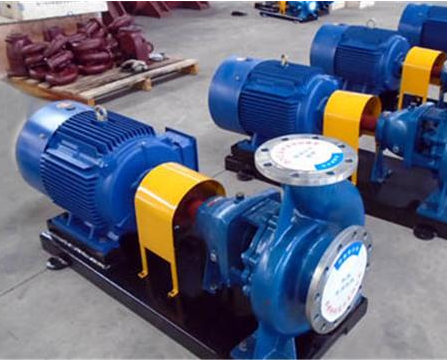The difference between clean water pump and sewage pump
There are significant differences between clean water pumps and sewage pumps in many aspects, which are mainly reflected in their design, purpose, working conditions and structural characteristics. The following is a detailed analysis of the differences between the two:
1. Conveying medium
Clean water pump: Mainly used to convey clean liquids without solid particles and corrosiveness, such as tap water, mineral water, purified water, etc. This type of pump is suitable for occasions with high water quality requirements, such as industrial and urban water supply and drainage, high-rise building pressurized water supply, garden sprinkler irrigation, fire boosting, long-distance transportation, HVAC refrigeration cycle, farmland irrigation, etc.
Sewage pump: It is specially used to convey sewage or dirt containing solid particles and fiber impurities, such as domestic sewage, industrial wastewater, agricultural drainage, etc. Sewage pumps can handle media containing solid impurities and have strong anti-clogging and wear resistance.
2. Impeller structure
Clean water pump: The impeller is generally closed or semi-open, and the impeller channel is narrow. This design helps to improve efficiency and head. The impeller structure of the clean water pump makes it more suitable for conveying clean liquids.
Sewage pump: The impeller is generally open or non-blocking, and the impeller channel is wide. This design can effectively prevent blockage and wear, ensuring that the sewage pump can run smoothly when handling media containing solid particles.
3. Sealing method
Clean water pump: The sealing method is generally mechanical seal or packing seal, the main purpose of which is to prevent liquid leakage and protect the pump body and motor.
Sewage pump: The sealing method is more complicated, usually using double-end mechanical seal or external flushing mechanical seal. This sealing method can not only prevent liquid leakage, but also effectively prevent pollutants from entering the sealing chamber and bearings, protecting the key components of the pump.
4. Installation method
Clean water pump: The installation method is generally horizontal or vertical, and the specific choice depends on the flow and head requirements and the installation conditions on site.
Sewage pump: The installation method is generally vertical or submersible. Submersible sewage pumps are particularly popular in places where space is limited or infrastructure costs need to be saved because they can be directly placed in the sewage tank without the need to build a special pump room.
5. Other differences
Purpose and adaptability: Clean water pumps are mainly used in places with high water quality requirements, while sewage pumps are widely used in various sewage treatment and discharge occasions. Sewage pumps show stronger adaptability and reliability when dealing with media containing solid particles and fiber impurities.
Maintenance and maintenance: Since the media handled by sewage pumps are usually harsh, their maintenance and maintenance work is relatively more complicated and frequent. Clean water pumps are relatively simpler.





